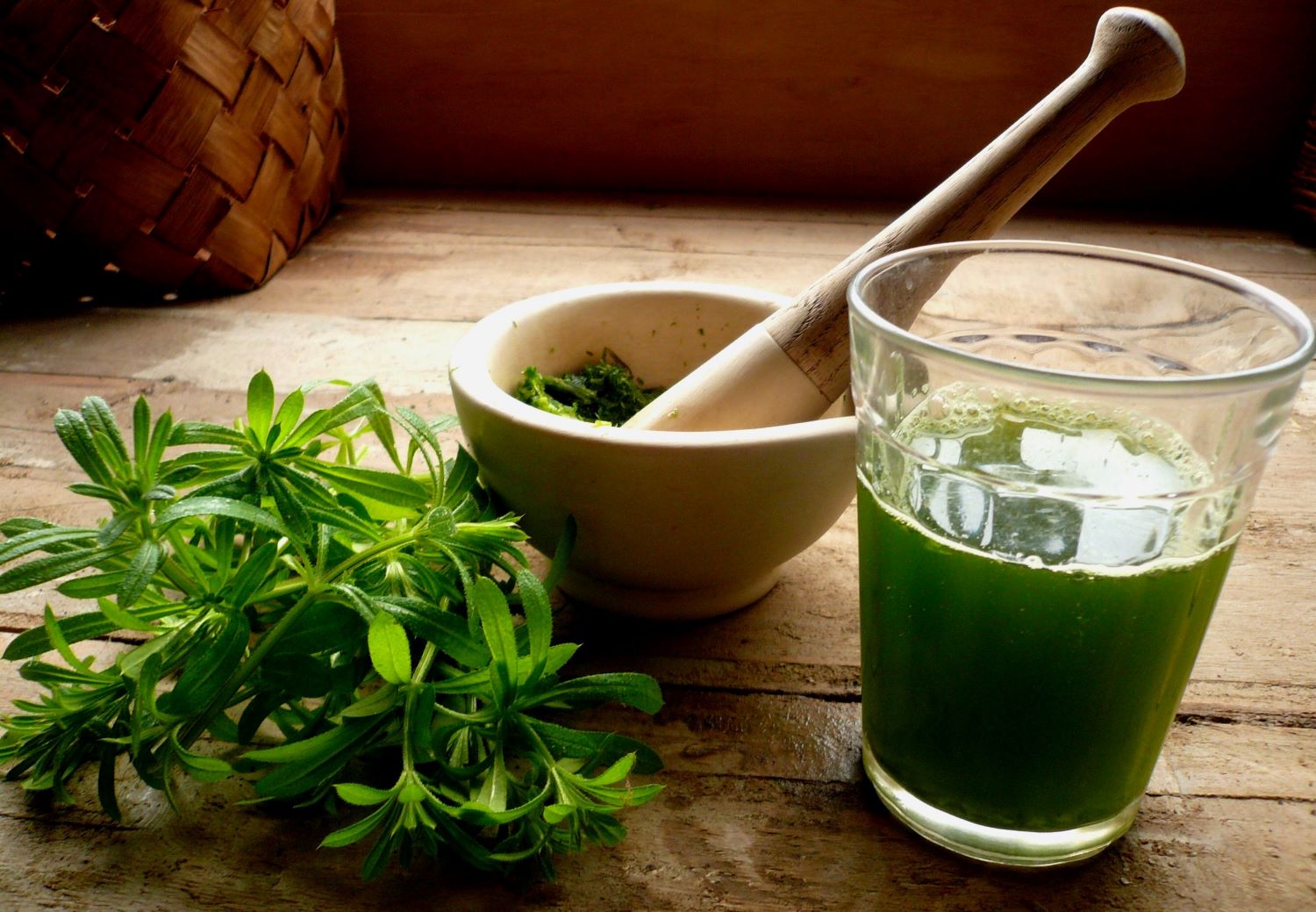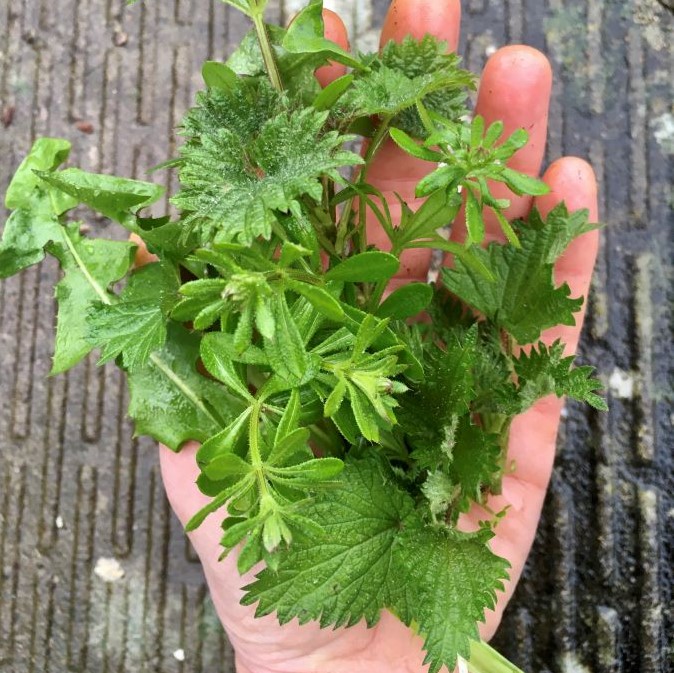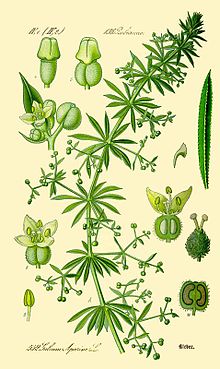Cleavers & Nettle Spring Tonic.

I’ve been watching the cleavers and nettles in my garden over the last few weeks, waiting for them to get big enough to start harvesting for this, my all time favourite thing to make as spring arrives. Cleavers and nettles make one of the best spring tonics: cleavers are great for the lymphatic system and nettles are bursting with nutrition.
Cleavers has a lot of different names, but is often commonly known as goose grass or sticky weed. It’s the one that you can throw at your friend’s back and it’ll stick there without them feeling a thing.
Cleavers grow abundantly in gardens/allotments and any marginal area. They appear in my flower beds a lot, they’re vigorous self seeding plants. I leave them there so I can harvest them for juicing, but it’s not a popular plant with most gardeners, as it can be very invasive.
Nettles often grow in the same place as cleavers; they like the same conditions and soil. You want the top six leaves of the nettle as they’re the ones that are nice and juicy. If you harvest regularly from a patch of nettles, they’ll keep producing new, young leaves.
If the leaves are curled under, have visible signs of spider web on them, or tiny eggs on the underside, do not pick them, but move on to another patch. Nettles are an imprtant food source for the larvae of butterflies such as Red Admiral, Small Tortoiseshell, Comma and Painted Lady.
Method: gather a small handful of the young leaves of each plant. Make sure you gather from places where there’s no pollution (ie dogs or passing vehicles). Take only what you need and leave plenty behind, as these plants are important for other creatures too as mentioned.
Crush in a pestle and mortar with a few tablespoons of water added. Strain and keep the juice. Repeat the crushing and straining to get a glassful of juice. Drink straight away while it’s vibrant green.
If you’ve been to a Native Hands course you’ll have seen that we start the camp fire each day using a bundle of dried cleavers. It’s one of the best plants to use for this. We look at how and when to forage cleavers for this on the Fire Making day course.
Nettles are well known for being a good source of fibre for making cordage and also weaving fabric from. It’s one of the plants we work with on the Wild Cordage day course.





